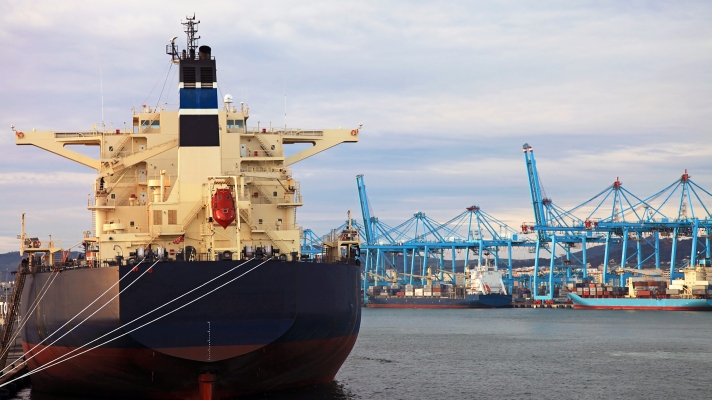Two decades after the devastating Erika and Prestige accidents, the European maritime safety framework has become one of the most robust in the world, according to the European Maritime Safety Report (EMSAFE). Yet, emerging technologies and digitalisation could soon also pose challenges.
EMSAFE is the first ever comprehensive overview of maritime safety in the European Union.
EU Transport Commissioner, Adina Vălean says the report is a ‘testimony to how the EU’s efforts to ensure maritime safety have been effective in preventing accidents and ensuring a high level of harmonised safety rules across the Union. At the same time, a single maritime accident can have catastrophic consequences for human life and the marine environment, so continuous vigilance and improvement remain essential.’
Also read: EMSA drones sniff emissions from ships in the Channel
Port State Control and EMSA
One of the key pillars of the EU safety framework is port state control, which results in over 14,000 vessel checks each year by inspectors in EU ports, complemented by legislative initiatives like the specific EU survey regime for sRoPax and high-speed craft, and the obligation for member states to report and monitor accidents centrally for analysis and development of preventive actions.
The EMSAFE report, published by the European Maritime Safety Agency (EMSA) also highlights the assistance that the Agency provides to the European Commission to check the implementation of EU legislation. In this regard, EMSA has carried out more than 300 visits to member states on behalf of the Commission over the past two decades, as well as more than 300 inspections of EU recognised organisations, to which member states are increasingly delegating tasks linked to their flag state responsibilities.
In addition, more than seventy inspections of maritime administrations, education, and training institutes in third countries were carried out in the same period, to assist the Commission in assessing compliance with the International Convention on Standards of Training, Certification, and Watchkeeping for Seafarers (STCW).
Also read: DNV: New technology may pose threat to safety at sea
SafeSeaNet
In 2020 alone, more than 680,000 calls to EU ports were registered. The exchange of safety information between member states in areas like dangerous cargo transported, vessel positioning data, and the registration of passengers, is therefore vital.
Consequently, EMSA will continue to develop and improve SafeSeaNet, the EU-wide maritime data exchange, to offer facilitation services, simplify the fulfilment of reporting obligations, and support new and revised EU legislation. These developments consolidate the role of SafeSeaNet as the primary platform for maritime safety information in the EU.
Ageing fleet
EMSAFE is released at a time in which the EU member state-flagged fleet is experiencing slower growth than that of world fleet (3.4 per cent growth over the past five years as compared to seven per cent growth for the world fleet). Although the average age of EU member state-flagged vessels is broadly comparable to that of the world fleet, some ship categories are ageing, including passenger vessels, which have an average age of 28 years.
Also read: ‘Ship fires among biggest safety concerns for the shipping industry’
New technologies can increase risk
According to the report, maritime safety will continue to pose challenges in the short and medium term, not only in managing the current fleet, but also in the areas of digitalisation, emerging technologies, and sustainability.
The sector’s efforts to reach emission targets as part of the European Green Deal are also linked to maritime safety, especially given that the use of new fuels (hydrogen, methanol, ammonia, and biofuels) and power technologies (batteries and fuel cells) need to be underpinned by adequate safety standards.
In addition, the number of alternatively fuelled vehicles, including electric cars, increased by 29 per cent between 2019 and 2021 in the EU, meaning that both passenger and cargo ships need to prepare for the safety risks of transporting more of these vehicles.
The report underlines that although autonomous ships offer new opportunities for industry, they also bring challenges in the regulatory and technical fields, including the need to develop a legal framework, standards, surveys, manoeuvres at sea and in port, and the qualifications of those on board, among others.








